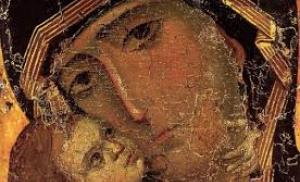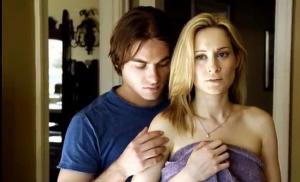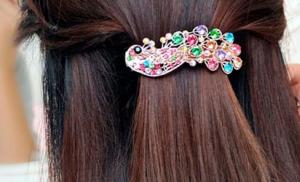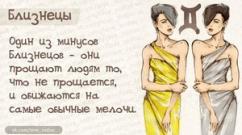KGB and fashion: how the stars of the podium of the USSR lived and how they ended. The most famous fashion models of the Soviet Union (10 photos)
The profession of "model" did not exist in Soviet times, so the girls who walked the catwalk were called "clothing demonstrators" or "fashion models". But in reality, the model was of the highest level. The Soviet fashion model Galina Milovskaya was just from this caste, but her life in her homeland did not work out. But she successfully realized herself in the West.
The beginning of the way
Galina Milovskaya was born in the capital of the USSR - Moscow, in a poor family. She and her sisters were raised by one mother, her father died when Galya was 13 years old. The girl dreamed of becoming an actress, especially since her external data were quite worthy: a tall, thin blonde, with subtle features face and huge eyes, she embodied the modern ideal female beauty... Galina successfully passed the exams and entered the theater school. B. Shchukin. It was interesting to study, only there was always not enough money, the scholarship was only 30 rubles. A friend at the school told Galina that at the All-Union Institute of the Assortment of Light Industry, one could earn extra money as a clothing demonstrator. Milovskaya came there and was greeted with a bang. With a height of 170 cm and a weight of 42 kg, she was ideally suited to modern model standards, and her appearance made her look like a trendy western fashion model Twiggy. Galina was hired by the fashion perspective department, and she began to master a new profession. Then there were no courses for fashion models, and the girls themselves learned to walk on the catwalk, developed a model gait. Galya quickly learned the tricks and became a popular fashion model.

Historical context
At the time when Galina Milovskaya decided to become a fashion model, in the USSR this profession, to put it mildly, was not at all prestigious. During the Brezhnev stagnation, the public paid great attention to the morality of Soviet citizens. Exposure of the body (open knees, cleavage, even completely innocent) was viewed as an insult to public taste. A woman had to embody the features of a worker, an exemplary mother and a respectable wife, and there could be no question of any femininity, let alone sexuality. The sanctimonious Soviet morality believed that female attractiveness and its demonstration humiliated the dignity of Soviet citizens. Also, the society vigilantly followed the patriotic sentiments of the population. Any disrespectful attitude towards symbols was severely punished. For a political anecdote, one could go to prison, and for dishonest treatment of the portraits of leaders, one could lose a job. Against the background of such implanted patriotism, any admiration for Western culture and way of life was perceived as an insult to the Soviet system. The West was an enemy, and it could only be scolded, it was impossible to praise it and encourage the implantation of Western values in Soviet society. For communicating with foreigners, they were no longer imprisoned, as under Stalin, but they took note of a person and closely watched his behavior. The stifling atmosphere led to the fact that many freedom-loving citizens and simply people of broad views left the country under any pretext. Emigration was perceived by many representatives of the creative intelligentsia as liberation.

Model career
Against this historical background, Galina Milovskaya (fashion model) chooses a way of life that is not entirely correct from the point of view of power and morality. V new profession it was quite successful. She worked a lot, demonstrating the clothes of the Moscow House of Models. Gradually she becomes famous in her circles, she was called "Russian Twiggy". In 1967, she was among the few carefully selected demonstrators participating in the only International Fashion Festival in the USSR. This event brought together a lot of foreign journalists and photographers, they came, among other things, in search of new faces. One of the finds was Galya Milovskaya, her image was remembered by the leading photographer of the magazine "Vogue".

The history of the famous photo
Two years after the Fashion Festival, photographer Andre de Rone comes to Moscow to conduct a photo shoot for the Vogue magazine and he only saw Milovskaya as his model. The magazine spent a great preparatory work and received unprecedented permits for filming in the Kremlin and on Red Square. Galina Milovskaya said that the shooting in the treasury took place under the supervision of 17 submachine gunners. She was given the rod of Catherine the Great and the greatest diamond "Shah". For this shooting "Vogue" allocated 8 pages of the magazine. At the same time, Milovskaya did not receive a penny for her work, the entire fee was sent to state treasury... The most famous is the photograph in which Galina sits, legs apart, against the background of the Kremlin and the mausoleum.

Conflict with power
This shot infuriated the officials. Galina was summoned “on the carpet” by the Minister of Light Industry, who literally yelled at her in obscene expressions, accusing her of insulting the most holy - Lenin. “You should have walked naked across Red Square,” he shouted. So, Galina Milovskaya, whose biography was 100% dependent on officials, lost her part-time job in foreign magazines. Despite the attempts of her boss to blame everything on her "foolishness", she was forbidden to act abroad. But the troubles did not end there. Its leaders from the school in some strange way got to the swimsuit show, in which Galya took part. They said that she had fallen so morally that she could not claim to be a Soviet actress - she was expelled from the school.

Body art story
The last nail in the coffin of his career was the scandalous event for the USSR with experiments in body art. Galina Milovskaya, a fashion model, became a model for the artist Anatoly Brusilovsky. He organized an event for his friend, photographer from Cayo Mario Garrubba from the Italian magazine "Espresso", a vivid photo session. At his home, he gathered several friends, invited Galya as a model and made beautiful paintings on her naked body in the form of flowers, butterflies and birds. The photographer filmed the whole process and published it in his magazine. The scandalousness of the action itself with a naked body was reinforced by the fact that under the artist's photo the poem "Terkin in the Next World" by V. Tvardovsky, banned in the USSR, was printed. All this infuriated the Soviet government and Milovskaya cut off all the oxygen. She was categorically not allowed to work, despite the fact that she received very lucrative offers from the West. So, the owner of a very large modeling agency Eileen Ford did a lot to sign a contract with Milovskaya, she even made sure that a letter from President Nixon was sent to the USSR. But the Soviet government did not give Galina an opportunity to work.

Emigration
Model Galina Milovskaya was forced to start thinking about leaving the country. Her emigration was not political, she repeatedly emphasized that there was never any anti-Sovietism in her actions, that she simply participated in interesting art events and in no way fought the system. A. Brusilovsky helped to organize the departure, he was able to call her to Israel. On April 14, 1974, she flies to Rome, where Eileen Ford was already waiting for her. She arranged for Galina to participate in the competition Galina was pursued by photographers, they were surprised that she never smiled. She was very upset about leaving, thinking about the fate of her relatives.
Career in the West
Galina Milovskaya was able to integrate into the Western modeling business. She settled in London, starred for many European magazines, and often visited Paris. She did not become a top model, but she could earn herself a decent life. At this time, she met a lot of people, learned a new way of life, but always remained a Russian girl. Regardless of her wishes, her career still took on a political connotation, she was even called "Solzhenitsyn in a skirt."

Marriage
At one of the meetings in Paris, Galina meets the banker Jean-Paul Dessertin. Within 15 minutes, he proposed to her, and she accepted him. The next day, the couple signed at the mayor's office and they have been together for more than 30 years. Galina Milovskaya, whose date of birth (1949) is a secret carefully guarded by her, considers her new birthday the moment of her departure from the USSR, when she was able to change her whole life in an instant. The couple had a daughter, who today is one of the leading ethnologists in Guinea.
New life
Having married, Galina abandoned her modeling career, she finally decided to get an education. She entered the Sorbonne film directing department. She took place in this profession, having removed several documentaries, including "The Moment When Memories Come" about residents of a nursing home and "These Crazy Russians" about Russian avant-garde artists forced to leave their homeland in the 70s of the 20th century. And today she shoots reports and short stories about Russian art in the West.
Even during the years of Soviet power, thanks to her husband's connections, Milovskaya managed to visit her homeland three times as part of official delegations. After perestroika, she can regularly meet with relatives and visit Russia. She even presented her film at the Leningrad Festival. Galina Milovskaya is now a successful, self-sufficient woman with a happy destiny.
At the same time, the most famous Russian beauties were known and appreciated in the West, but at home, work in the "modeling" business (although there was no such concept at that time) often created problems for them. We will tell you how the life of the most famous fashion models of the USSR developed.
Valentina Yashina
The first real Soviet star fashion model, she began her career back in the 50s. She appeared on the podium until the age of 65. So model grandmothers are not a modern invention at all.
Yashina came to the profession from operetta. After graduating from college, she left with her first husband to Riga, but loud romance with a partner in "Silva" put an end to the stage and marriage. In order not to sit on her parents' neck, she decided to try herself as a model. And almost immediately she realized that this was her vocation, and she became one of the models of the House of Models for two decades.

After the arrival of the younger generation, she did not fall into depression, but continued to work, albeit not in the first roles. Personal life was also successful. She was always surrounded by fans, the most famous of whom was Joseph Kobzon. Her husband, Nikolai Malakhov, was a wealthy man, but after he died in 1991, his son and grandson quickly skipped the funds left by him, and Valentina Yashina died alone and in poverty.
Regina Zbarskaya
One of the most famous Soviet models in the world. Her career began in the Khrushchev thaw, she participated in the famous first overseas show of the House of Fashion Models on Kuznetsky. Then the collection of Vera Aralova made a splash, but no less admiration was given to the models that the Soviet delegation brought with them.

Zbarskaya attracted attention with Western and completely non-Soviet beauty. The press called it "the most beautiful weapon in the Kremlin." She actively traveled all over the world, starred with famous photographers. However, in the late 1960s, her husband, the famous artist Lev Zbarsky, went to Marianna Vertinskaya, and then to Lyudmila Maksakova.

Having survived depression and treatment in psychiatric hospital, Regina returned to the podium again, but the former glory could not be returned. Nevertheless, Zbarskaya continued to work until she fell in love with a Yugoslav journalist. Alas, this novel turned out to be fatal for her. The journalist published a book "One Hundred Nights with Regina Zbarskaya", in which he said that Zbarskaya works for the KGB and was the mistress of almost the entire Central Committee.
After that, she was only able to work as a cleaner in the same Model House in which she once shone. Dissatisfaction with life and an unstable mental state led Regina to commit suicide.
Mila Romanovskaya
The image of a bright blonde in a dress "Russia" at the end of the 60s became a symbol of the USSR for many in the world. Initially, the outfit was prepared for Zbarskaya, but it was on Romanovskaya that he made the most stunning impression on the audience. At the main event Soviet world fashion of the times of stagnation - the Moscow International Fashion Festival, held in 1968 in Luzhniki, - she became the unofficial "Miss USSR" in the opinion of foreign guests. And she was the first to make a successful leap in the West.

Romanovskaya got on the podium by accident: once she was simply asked to replace her friend, and she turned out to be so harmonious in this role that she immediately received an offer to permanent work... First in Leningrad, and then in Moscow, she quickly took the lead roles, even displacing the recognized prima - Zbarskaya. But this success had to be paid for with a ruined first marriage.

Romanovskaya did not remain alone for long, soon she married the artist Yuri Cooper and unexpectedly in 1972 emigrated with him to Israel. Very soon she found herself in London, where she worked a lot. She did not become a top model, but she was in demand. For five years her work schedule was so busy that there was no "window" even for a meeting with her husband, whom she also divorced as a result.
However, Romanovskaya found her new happiness almost immediately. Returning to England, she met a charming London businessman on the plane. Now she runs a business and travels a lot.
Galina Milovskaya
"Soviet Twiggy" and the most scandalous model of the USSR. Her star rose in 1968, when the young fashion model of VIALEGPROM (All-Union Institute of Assortment of Light Industry and Clothing Culture) was noticed by foreign photographers.

It also happened at the Moscow International Fashion Festival. Following this, she was invited to shoot for the magazine "Vogue". Then the photographer Arno de Rone came to Moscow. He brought with him a whole collection of clothes, which he was supposed to take off on one of the Russian models against the backdrop of Moscow sights. In terms of organization, this project is considered unprecedented so far. The point is not that permission was obtained to shoot on Red Square, although Soviet times that alone seemed quite incredible. Even the Moscow Kremlin's Armory was allowed to hold a photo session. And besides, for the shooting they were allowed to use genuine jewelry kept in the museum. Galina posed with the rod of Catherine II and the Shah diamond, which Russia received from Iran at one time as compensation for the death of Griboyedov.
Milovskaya previously treated the work of the model as just an interesting extra job while studying at the Shchukin Theater School. The proposal of a famous photographer opened up a completely different world for her.

Unfortunately for Milovskaya's photographs by Arnaud de Rone turned out to be a disaster. In the photographs taken in Red Square, Galina Milovskaya was sitting on paving stones with her back to the Mausoleum and portraits of communist leaders hung on the Kremlin wall on the occasion of the holiday. The girl was expelled from the podium and school. Shortly thereafter, she emigrated from the USSR.

Milovskaya's career in the West did not work out, although they continued to shoot her for a long time, but she did not make it into the top models. But she successfully married a banker, graduated from the Sorbonne and became a fairly well-known documentary filmmaker.
Tatiana Mikhalkova (Solovieva)
Although the career of Tatyana Mikhalkova (Solovieva) was short - only five years - she managed to become one of the most bright fashion models Model houses. It is interesting that her profession in those years was so low-prestige that her famous husband Nikita Mikhalkov long time preferred to present his wife as a translator.

The main Soviet couturier Vyacheslav Zaitsev was attracted primarily by her classic Slavic type. She got many outfits in which it was required to emphasize the national roots of Soviet fashion.

It is difficult to say how her career would have developed, but in 1972 she met the aspiring filmmaker Mikhalkov. She did not immediately leave work. Even being pregnant with the first child, she participated in the shows. But when it became known that there would be a second, she finally left the podium. The model herself once admitted that her husband put her before a choice: either he or work as a fashion model. And even packed a suitcase.
Leokadia Mironova
Soviet model compared to Audrey Hepburn. She was one of the first to be offered solid contracts in the West, although she was not allowed to travel abroad for a long time because of her repressed father.

Today Mironova is better known due to the fact that she was the first to start talking about the unpleasant moments of the fashion world: low salaries, unfair treatment and big party bosses who could demand closeness. Actually, she had to face one of these bosses herself, and she paid dearly for the refusal. She was suspended from work, for a year and a half she could not get a job until she was taken to the Model House in Khimki.

Now Mironova has long been retired, she has never been married, lives in the "Khrushchev", but still occasionally takes part in shows. Each of her appearances on the podium is always accompanied by applause.
Elena Metelkina
Real fame came after the release of the cult science fiction film "Through the thorns to the stars." Its creators, Richard Viktorov and Kir Bulychev, still could not find a girl for the role of an alien, and then they came across a fashion magazine with a model with an unusual, unearthly appearance. After the release of the film, Metelkina became a star.

I must say that before the film, her career was pretty ordinary. She did not enter the Shchukin School and VGIK and went to get a job as a fashion model. She was not taken to the Model House either, then she easily got a job as a clothing demonstrator at GUM.

After a starring role in a movie, Metelkina got married and became one of the models of Vyacheslav Zaitsev. Alas, this is where the white streak in her life ended. The husband turned out to be a swindler, because of whose intrigues Metelkina almost lost her apartment, her mother fell ill, and her father committed suicide. Film career also did not work out, and troubles squeezed her out of the podium. To survive, Elena worked as a secretary, a teacher in a correctional boarding school, a saleswoman in a shoe store, a manager at a foreign language course.
Tatiana Chapygina
She could be seen in almost all fashion magazines, she regularly flashed on the pages of "Rabotnitsa" and "Krestyanka". Maybe crowds of photographers from the West did not revolve around her, but in the USSR it was she who was the most demanded model.

Like many Soviet fashion models, Chapygina did not even think about a career on the podium. She graduated from medical, but did not want to work as a doctor and got a job at the sanitary and epidemiological station. Out of pure curiosity, she went to the Models House to audition, and there Vyacheslav Zaitsev saw her. For two years she worked only within the country, then she made her way to the "prim", which represented the USSR in the world. Further, her career developed calmly and without scandals, which is probably why she is now rarely remembered on talk shows.

She left the Model House at the age of 37 almost immediately after the wedding. The future husband saw her for the first time at the show, waited for it to end and invited her to a cafe. Now she is a housewife, occasionally gives interviews and still goes to the catwalk during Fashion Week in Moscow.
Preview photo: Soviet fashion models in London in 1961
In the 60s, a cultural revolution is raging in the Western world. America has been going crazy with Presley for several years, and Beatlemania begins in Europe. The entire beautiful half of humanity exposes their graceful legs to indecency, men begin to grow their hair, clothes are replete with unusually bright colors and take on defiant forms. The explosion of the Cultural Revolution in the West is so strong that its echo even penetrates the Iron Curtain.
By this time, only a small part of the population of our country had real performance about what was happening in the fashion world there - abroad. For most of the country, the very concept of fashion did not exist at all. Of course, held in Moscow International festival youth and students in 1957 and first show of the House of Maud by Christian Dior in 1959 brought a fresh stream to life Soviet people, but, unfortunately, only a few citizens of the USSR had a chance to take part in these events “live”, while the rest had to get to know them through the pages of newspapers and radio programs, which at that time were ideologically politicized through and through. But even a small handful of eyewitnesses and the Khrushchev thaw standing on the street were already enough for people in our country to start talking about what had been forgotten for several years. In our country, they began to talk about fashion again. The desire to look beautiful has always existed in a person, especially in relation to women. Despite the time in which they live, despite the social system, status and other factors, women have always dreamed of being charming. Unfortunately, in the early 60s, an ordinary Soviet woman did not have even a tenth of the opportunities to transform that Western beauties had. Light industry It was as if the USSR continued to churn out clothes for the soldiers of the Red Army, guided only by the State Planning Committee: a lot, the same and tasteless. Naturally, it was unrealistic to get good clothes on the counters of the Soviet trade. In addition, the very fashion and culture of dressing well was not welcomed by the official ideology, and the most active fashionistas are dudes were prosecuted under Article 58 of the Criminal Code for anti-Soviet activities.
All fashionable gizmos and magazines could enter our country only illegally from abroad and only thanks to the few foreign business trips of diplomats, long-range aviation pilots and sailors. Very rarely, the stores "threw away" the products of friendly socialist countries of Eastern Europe, behind which many-meter queues were instantly lined up. Such clothes were sold almost piece by piece - they were “released one piece at a time” and called the terrible word “deficit”. The deficit in the Soviet state was not so much fashionable clothes as beautiful and carefree life in general.
In those years, it was common for our country to export to the West not only Natural resources but also the image of a happy person living in a socialist country. For more credibility, Soviet officials organized open exhibitions of achievements National economy, including fashion shows. There was a mythical experimental workshop on Kuznetsky Most, where, if not loud, but masterpieces of fashion were created, which were applauded in 1962 by Paris, and a year later by Rio de Janeiro. Semi-private fashion shows were also held, on the catwalk of which fashion models of that time, such as Yanina Cherepkova, Mila Romanovskaya, Liliana Baskakova, Regina Zbarskaya, Galina Milovskaya.




It is not known for sure thanks to or in spite of whom, but world fashion trends in the early 60s begin to penetrate in thin streams into our country. In the 61st year, Soviet women for the first time "get acquainted" with hairpins. This name was given to the elegant women's shoes on a high, thin heel, reaching at the base a scanty 6 × 6 or 5 × 5 millimeters.


It was inconvenient to walk on high heels, they left deep marks in the fresh asphalt, because of the hit of fashionable heels in the slot between the steps, the metro escalators stopped, but the women stubbornly continued to put on pointed high heels.
Probably there was no sexier uniform for a woman in the 60s than a black tight sweater, a tight skirt, and necessarily a stiletto heel. Even in winter, even to work and always on a date, girls ran in high heels to be brilliant and fashionable. It was one of the first victims of beauty that women of the 60s volunteered for. By the way, the once ultra-modern hairpin over time not only did not go out of fashion, but also turned into a classic.
The 60s were remembered by the whole world of fashion and socialist women of fashion, including insanity on the basis of everything artificial. New fabrics and new names: nylon, lycra, crimplen, vinyl, dralon and other "-lones", "-lans", "- linens". Clothes made from new types of fabric were considered comfortable and practical. She did not wrinkle, was easily cleaned and washed. And most importantly, it was cheap.
Since the 62nd year, Soviet citizens first get acquainted with the dark blue Italian raincoats of Bologna. The Italians used this material for work clothes.

He conquered us with his novelty and the fact that folded clothes made of such material almost did not take up space.

In the mass consciousness of Soviet people, the conviction was formed that every self-respecting person should have a cloak in Bologna. In the Soviet Union, bologna psychosis lasted a whole decade and gave rise to such an unthinkable concept throughout the world as summer coat... Over time, the production of raincoats, flowing at the seams and at the same time serving as a greenhouse in any weather, was mastered by the domestic light industry.

Now it is hard to believe it, but in the 60s a period came when natural fur, inaccessible and inaccessible for the majority of the population, began to seem boring, undemocratic and “mossy”. The fashion for faux fur coats and fur has captured absolutely everyone, even people who have the opportunity to buy things made from natural fur. For literally several years, all Soviet women of fashion dressed in faux mink fur coats, and men began to wear faux astrakhan fur hats. Fashion on artificial fur ended as suddenly as it began, and more fashion trophies have joined the ranks of the ever-growing wardrobe.

In the 64th year, nylon shirts became widespread in the USSR. Unlike antiquated cotton, sturdy and fashionable nylon felt like an absolute material. Nylon shirts did not wrinkle, were easily washed and, in general, seemed to be eternal. White nylon shirts were considered the most chic. Typical portrait of a fashionable young man 60s - dark pipe trousers, white nylon shirt and slicked hair.
In the 67th year, clothes made of a new synthetic material, crimplen, were released. Clothes made of crimplen do not wrinkle, they do not need to be ironed, it is enough to wash, dry, hang neatly, and you can wear the thing again. A significant drawback is electrostaticity. Crimplen can spark, pop and stick to the body. They fought against electrostaticity by mastering the production of antistatic fluids.


Over time, thick woolen coat fabrics began to be produced under the embossed crimplen.
Appearing in the late 60s, the mini instantly won the title of the most fashionable women's clothing for a whole decade. Where it was possible (in schools and technical schools), the guardians of morality and the chairmen of the Komsomol cells in the morning measured the length of the skirts and the distance from the knees to the skirts with rulers and, if they did not match, sent the students home to change. The short length of the skirt was condemned, ridiculed, forbidden, but all was useless. Literally in a couple of years, under the onslaught of the beauty of bare female legs, bans on the length of skirts fell and older women could afford to wear mini. The fashion for short skirts, which so quickly conquered the capital and big cities, sometimes reached the remote corners of our country with a long delay. It happened that a young student returning home for a vacation to the countryside could not only be ridiculed by her fellow villagers, but also receive a thrashing from strict parents.




In the late 60s, another disaster struck the fashion conservatives. Women are becoming an absolutely fashionable and relatively indecent phenomenon. pantsuit.

The cut of the first suits, as a rule, was not complicated - straight or slightly fitted jacket, straight or slightly flared trousers, large metal buttons, “Dog's ears” collar. Together with the suit, they wore blunt-nosed shoes with thick and not very high heels... In all this outfit, the woman looked like a kind of “sailor”.
Women's trouser suit in the USSR is the beginning of emancipation. Wearing trousers, despite the fashion, was condemned by society as public female smoking. And wearing this suit was like a challenge, like an audacity. The executive committees forbade the appearance in trousers, for example, in clubs. A woman in trousers could not be allowed into a restaurant, just as they were not allowed in a mini skirt before. The exception was the Baltic republics, famous for their loyalty to pro-Western trends in fashion and to women's trousers in particular.

Since at the end of the 60s industrial knitwear was hopelessly lagging behind the increased demands of Soviet citizens, the most skillful half of the female population turned to science “purl two - face two”:
“We knit ourselves” is becoming almost the most popular section in various publications. Girls and grandmothers also attend cutting and sewing courses, sometimes men can be seen there.

In 1965, an event took place that simply cannot be ignored. Vyacheslav Zaitsev came to work at the All-Union House of Models.




Fashion designer Vyacheslav Mikhailovich Zaitsev and famous fashion model Regina Zbarskaya. 1963 year



Fashion designer Vyacheslav Zaitsev and fashion model Regina Zbarskaya discuss new models. 1966 year
He was the first man in the nascent Soviet fashion business. A talented artist, non-standard designer with an interest in contemporary Western fashion trends... He managed to embody the progressive ideas of Western fashion in an original style, adapted to existing reality. Zaitsev became the first and main fashion designer in the USSR. Our stars began to dress at him. Many images created by him in the late 60s survived for more than one decade.
Today almost every second girl dreams of becoming a model. In Soviet times, the profession of a fashion model was not only not prestigious, but was considered almost indecent and at the same time was poorly paid. Demonstrators of clothing received a maximum rate of 76 rubles - as workers of the fifth category.
At the same time, the most famous Russian beauties were known and appreciated in the West, but at home, work in the "modeling" business (although there was no such concept at that time) often created problems for them. In this issue, you will learn about the fate of the brightest fashion models Soviet Union.

Regina Zbarskaya
Her name has become synonymous with the concept of "Soviet fashion model", although for a long time about tragic fate Regina knew only people close to her. Everything was changed by a number of publications that appeared in the press after the collapse of the USSR. They started talking about Zbarskaya, but so far her name is more shrouded in myths than fanned by real facts.
The exact place of her birth is not known - either Leningrad, or Vologda, there is no exact information about her parents. It was rumored that Zbarskaya was associated with the KGB, she was credited with affairs with influential men and almost espionage activities. But those who really knew Regina say unequivocally: all this is not true.
Only husband the sultry beauty was the artist Lev Zbarsky, but the relationship did not work out: the husband left Regina, first to the actress Marianna Vertinskaya, then to Lyudmila Maksakova. Zbarsky died in 2016 in America, and Regina, after his departure, was never able to recover: in 1987 she committed suicide by drinking sleeping pills.
Regina Zbarskaya was called “the Russian Sophia Loren”: the image of a sultry Italian woman with a magnificent page haircut was invented for her by Vyacheslav Zaitsev. Regina's southern beauty was popular in the Soviet Union: dark-haired and dark-eyed girls, against the background of a standard Slavic appearance, seemed exotic. But foreigners treated Regina with restraint, preferring to invite blue-eyed blondes for filming - if, of course, they managed to get permission from the authorities.
.jpg)
Mila Romanovskaya
The complete antipode and longtime rival of Zbarskaya is Mila Romanovskaya. Delicate and sophisticated blonde, Mila looked like Twiggy. It was with this famous British woman that she was more than once compared, even a photo of Romanovskaya a la Twiggy, with lush false eyelashes, in round glasses, with her hair slicked back, has been preserved.
Romanovskaya's career began in Leningrad, then she transferred to the Moscow Fashion House. It was here that a dispute arose about who is the first beauty of a big country - she or Regina. Mila won: it was she who was entrusted to demonstrate the dress "Russia" by fashion designer Tatyana Osmerkina at the international exhibition of light industry in Montreal. The scarlet outfit, embroidered at the neck with gold sequins, was remembered for a long time and even entered the history books of fashion.
Her photo was eagerly published in the West, for example, in Life magazine, calling Romanovskaya Snegurochka. Mila's fate was generally happy. She managed to give birth to a daughter, Nastya, from her first husband, whom she met while studying at VGIK. Then she got divorced, spun bright romance with Andrei Mironov, she again married the artist Yuri Cooper. With him, she emigrated first to Israel, then to Europe. The third husband of Romanovskaya was the British businessman Douglas Edwards.

Galina Milovskaya
She was also called "Russian Twiggy" - the type of skinny tomboy was extremely popular. Milovskaya became the first model in the history of the USSR who was allowed to pose for foreign photographers. Shooting for Vogue magazine was organized by Frenchman Arnaud de Rone. The documents were signed personally by Chairman of the Council of Ministers Kosygin, and even now any gloss producer could envy the list of locations and the level of organization of this photoset: Galina Milovskaya demonstrated clothes not only on Red Square, but also in the Armory Chamber and the Diamond Fund. The scepter of Catherine II and the legendary Shah diamond were the accessories for that shooting.
However, a scandal soon erupted: one of the pictures in which Milovskaya sits on the paving stones of the country's most important square with her back to the Mausoleum was declared immoral in the USSR, and the girl began to hint at leaving the country. At first, the emigration seemed to Gala a tragedy, but in fact it turned out to be a great success: in the West, Milovskaya collaborated with the Ford agency, went to shows and starred for gloss, and then completely changed her profession, becoming a documentary filmmaker. Galina Milovskaya's personal life was successful: she was married to the French banker Jean-Paul Dessertino for 30 years.

Leka Mironova
Leka (short for Leokadiya) Mironova is the model of Vyacheslav Zaitsev, who is still filmed in various photo shoots and takes part in television programs. Leka has a lot to tell and show: at her age she looks great, and the memories associated with work will be enough for a thick book of memoirs. Mironova shares unpleasant details: she admits that her friends and colleagues were often forced to give in to harassment the mighty of the world this, while she found the courage to refuse a high-ranking suitor and paid dearly for it.
In his youth, Leku was compared to Audrey Hepburn for slimness, chiseled profile and impeccable style. She kept it to a ripe old age and now willingly shares her beauty secrets: this is an ordinary baby cream for moisturizing the skin, red wine instead of tonic and a hair mask with egg yolk. And of course - always keep your back straight and not slouch!

Tatiana Mikhalkova (Solovieva)
The wife of the famous director Nikita Mikhalkov is used to seeing a worthy mother large family, and few people remember her as a slender young girl. Meanwhile, in her youth, Tatyana went on the catwalk for more than five years and starred for Soviet fashion magazines. She was also compared to the fragile Twiggy, and Slava Zaitsev christened Tatiana a Botticellian girl.
It was whispered that a bold mini helped the girl to get the job of a fashion model - the artistic council unanimously admired the beauty of the applicant's legs. Friends jokingly called Tatiana "Institutochka" - unlike other models, she had a prestigious higher education, obtained at the Institute. Maurice Torez.
True, changing her surname from the girl's Solovyov to Mikhalkov, Tatyana was forced to part with her profession: Nikita Sergeevich rather sharply told her that the mother should raise the children and he would not tolerate any nannies. For the last time, Tatyana went to the podium in the seventh month of pregnancy, carrying her eldest daughter Anna under her heart, and then completely plunged into the life and upbringing of heirs. When the children grew up a little, Tatyana Mikhalkova created and headed charitable foundation"Russian silhouette", which helps novice fashion designers.

Elena Metelkina
She is known for her roles in the films Guest from the Future and Through Thorns to the Stars. The role of Metelkina is a woman of the future, an alien. Huge unearthly eyes, a fragile figure and a completely atypical appearance for that time riveted attention to Elena. In her filmography there are six films, the last one dated to 2011, although Elena does not have an acting education, she is a librarian by her first profession.
The rise of Metelkina refers to an era when the popularity of the profession of a fashion model has already declined and a new generation was about to appear - already professional models tailored according to the Western model. Elena worked mainly in the GUM showroom, starred for Soviet fashion magazines with patterns and knitting tips. After the collapse of the Union, she left the profession and, like many, was forced to adapt to the new reality.
There are many sharp turns in her biography, including a criminal story with the murder of businessman Ivan Kivelidi, whose secretary she was. Metelkina was not injured by accident; her replacement secretary died along with her boss. Now Elena appears on television from time to time and gives interviews, but she devotes most of her time to singing in the church choir in one of the churches in Moscow.

Tatiana Chapygina
Probably every housewife knew this girl of ideal classical appearance in the USSR by sight. Chapygina was a very popular model and, in addition to participating in shows, she starred a lot for magazines, demonstrating the trends of the next season in publications that offered Soviet women to sew or knit fashionable clothes on their own. Then the names of the models were not mentioned in the press: they signed only the author of the next dress and the photographer who captured it, and information about the girls who represented stylish images, remained closed. Nevertheless, Tatyana Chapygina's career was developing successfully: she managed to avoid scandals, rivalry with colleagues and other negativity. She left the profession on takeoff, getting married.

Rumiya Rumi Rei
She was called only by her first name or by the nickname given by her friends - Shahinya. Rumia's appearance was very bright and immediately attracted the eye. Vyacheslav Zaitsev suggested taking her to work - on one of the views he fell for bright beauty Rumiya and soon made her his favorite model.
Her type was called "the woman of the future", and Rumia herself became famous not only for her beauty, but also for her character. He, by her own admission, was not sugar, the girl often argued with colleagues, violated the accepted rules, but there was something attractive in her rebelliousness. In adulthood, Rumia kept slim figure and striking appearance. She still maintains friendly relations with Vyacheslav Zaitsev and looks, as they say, one hundred percent.

Evgeniya Kurakina
Evgenia Kurakina, an employee of the Leningrad Fashion House, a girl with an aristocratic surname, played the role of a "sad teenager". Eugene was shot a lot by foreign photographers, and to work with the girl, they specially came to Northern capital to capture the beauty of Zhenya against the backdrop of local attractions. The model later complained that she never saw most of these pictures, because they were intended for publication abroad. True, the archive of Evgenia herself contains many different photos taken in the 60s and 70s of the last century, which she sometimes provides for thematic exhibitions. Evgenia's fate was happy - she got married and went to live in Germany.

The sixties were a time of revolution in fashion, in music, the very consciousness of a person turned upside down. The conservative post-war 50s gave way to the Beatles. To loud music, impudent attractive girls in mini-skirts with bright makeup and incredible hairstyles on their heads took to the streets. Like every time, the 60s had its own heroines and style icons, women who were imitated in the manner of dress, hair and makeup. In this article, we will introduce the models from the 60s.
Her real name is Leslie Hornby. World famous model, actress and singer from Great Britain. She received her pseudonym "Twiggy" for her incredible thinness (translated from English, twig is a reed, twiggy is a thin one). The future model was born in the suburbs of London in 1949.

At the age of 16, she became the face of a beauty salon. At 17, the Daily Express named her the face of the year. She worked with cult photographers of the 60s: Helmut Newton and Cecil Beaton. She is called the first supermodel in the history of the fashion business. In 67-68, Mattel even produced Barbie Twiggy. She started a fashion for a very thin, childish body, which caused a wave of anorexia, girls wanted to be like her.

Her style is a cocktail of rock and roll, hippie culture, punk paraphernalia. She is like a child, like a big doll. Short skirts on her did not look provocative, but very cute, as if on a schoolgirl. Twiggy made the boyish haircut incredibly popular, and it looked more than original against the background of complex Babylons and Babbet. In makeup, she focused on her huge eyes, trying to visually enlarge them even more. Twiggy dyed her eyelashes very thickly with mascara, painting over even the lower eyelashes, so that they practically stuck together, creating an absolutely doll-like impression. She emphasized the movable fold of the eyelid in a dark tone, which made her eyes simply huge. At the same time, the eyebrows and lips were as natural as possible, and the delicate porcelain skin acted as a background for bright eye makeup.

German model Veruschka - in fact blue bloods, she is née Countess Vera Gottlieb Anna von Lehndorff. In their possessions during the Second World War, meetings of the Nazis were arranged, but, later, her father was brought before a military court and was executed, and little Vera with her mother and sisters and brothers ended up in a concentration camp, where the family's last name was changed.

Vershuki-model's first serious contract was with the American agency Ford Models, to which she was invited when she moved to work in Paris. After which she leaves to work in America, but soon comes from there with nothing. Returning to her homeland, she becomes famous in Munich, starring in a small episode of the legendary painting by Antonioni "Magnification". The photographer Franco Rubartelli discovered her as a large model with a series of avant-garde photographs. Then she worked with the great provocateur Salvador Dali. During her career, she has starred for over 800 magazine covers!
The experience of working with Dali did not pass without leaving a trace for the formation of her style. It was very unexpected and avant-garde even for the revolutionary fashion of the 60s. Having met the artist Holger Trutsch, Veruschka found not only a husband in his person, but also a companion in creativity, with whom they created bodypainting masterpieces. We can admire brilliant photographs where Veruschka becomes a part of nature or architecture, merging with the surrounding landscape. Interestingly, in life she preferred black in clothes, which acted as a frame for her body, which became a real canvas for her husband's paintings.

Gene Shrimpton
British model Jean Shrimpton was born at the height of the war in 1942 in Buckinghamshire. At the age of 17, she met director Sai Endfield, who opened her way to the big modeling business. She entered the school of models and very soon looked from the covers of such glossy monsters as Harper's Bazaar and Vogue. As in the fate of many models, her meeting with photographer David Bailey turned out to be very important and fateful in her life, which made her insanely popular.

She was called the most beautiful model in history. She was really good, all her parameters are perfect, big eyes, thick hair, light gait. She also had the title of "highest paid model". Jean was very fond of miniskirts and made them incredibly fashionable.

Her face has been recognized as the standard of beauty. For almost all of her modeling career, she exploited the image of the "frightened doe," as many called it. Her charming bangs, high fleece made her features even more pretty. The eyebrows raised in eternal surprise made the face even younger, it turned out to be such a slightly capricious, but very beautiful Jin doll.

Marisa Berenson
The daughter of an American diplomat, Marisa Berenson, has been accustomed to living beautifully since childhood. She was born into a wealthy and famous family. Her love for fashion was inherited from her - her grandmother Elsa Schiaparelli, an artist and fashion designer, who chose surrealism as a means of expressing her thoughts.

The beginning of her career was very loud, she almost immediately got on the covers of "Vogue" and "Time" magazines. But being just a model for her, born in such a famous family, was not enough, and she began to realize herself as an actress. Marisa starred her career in a large number films. Marrisa's life ended tragically - she was a passenger on one of the planes hijacked on September 11, 2001.

Her image that pops up in memory is, first of all, the mane of hair framing Beautiful face... Her bottomless eyes, always with "a little too" painted eyelashes, were her business card... She knew how to very skillfully present classic things and at the same time look in absolutely avant-garde outfits as if she was born in them - this is a real gift of the model. Her musthave in makeup is color - shadows, eyeliners, mascaras and false eyelashes.

The unusual appearance of the model is remembered at first sight. Thick straight bangs like those of little ponies, huge eyes, porcelain skin with a scattering of freckles and full lips, which she liked to emphasize with shine of delicate shades. Just think, she was the girl the Beatles and Eric Clapton sang about. Of course, everyone wanted to be like her. She borrowed a lot from hippies, in the style of clothes, hairstyles, makeup, wearing floral prints, flying dresses, braiding her golden hair in pigtails, wearing funny round glasses.

Follow the fashion blog from FACE nicobaggio, we will tell you the most interesting things about the history of fashion and makeup, remember the most beautiful and powerful women in the fashion industry, let's talk about men who create beauty.













